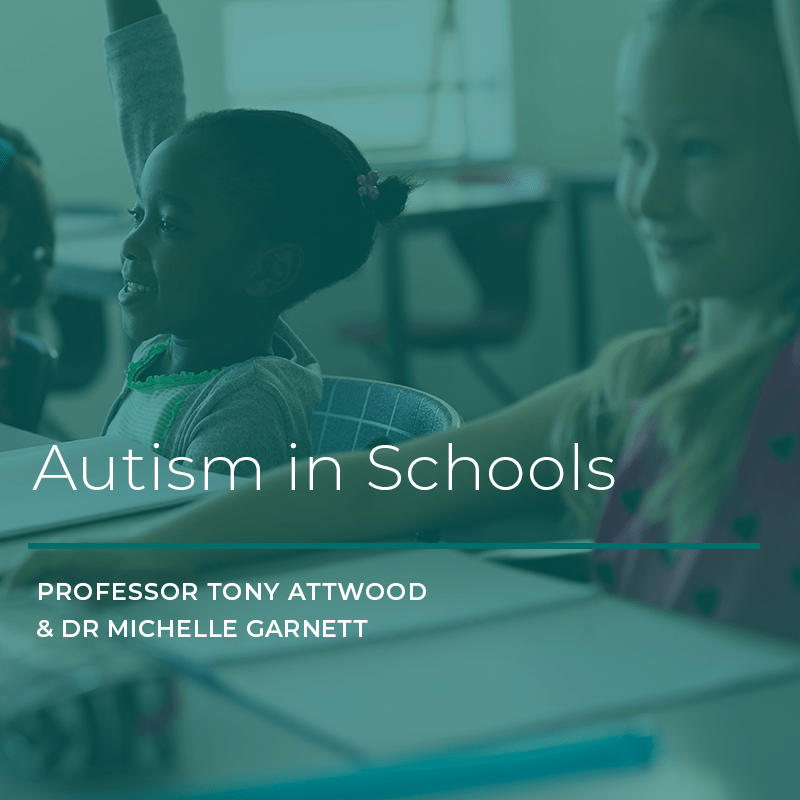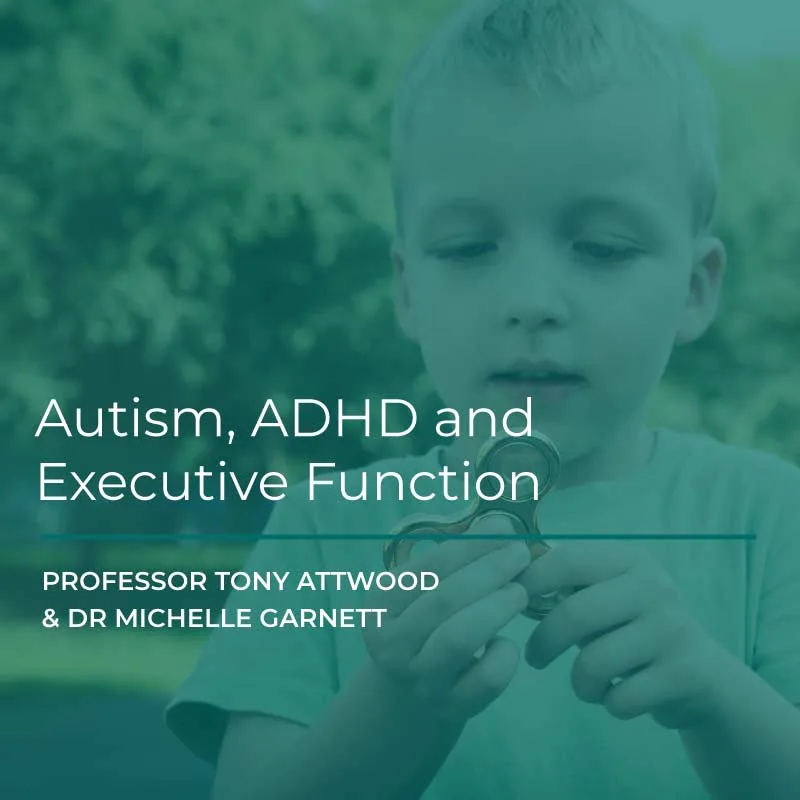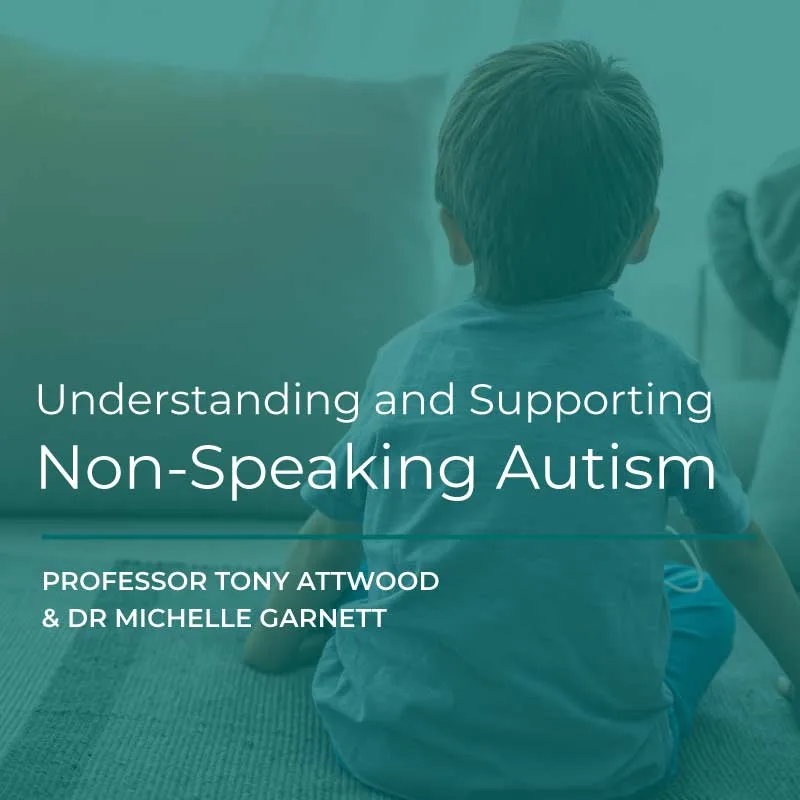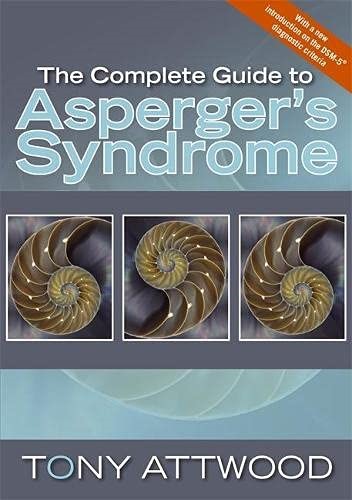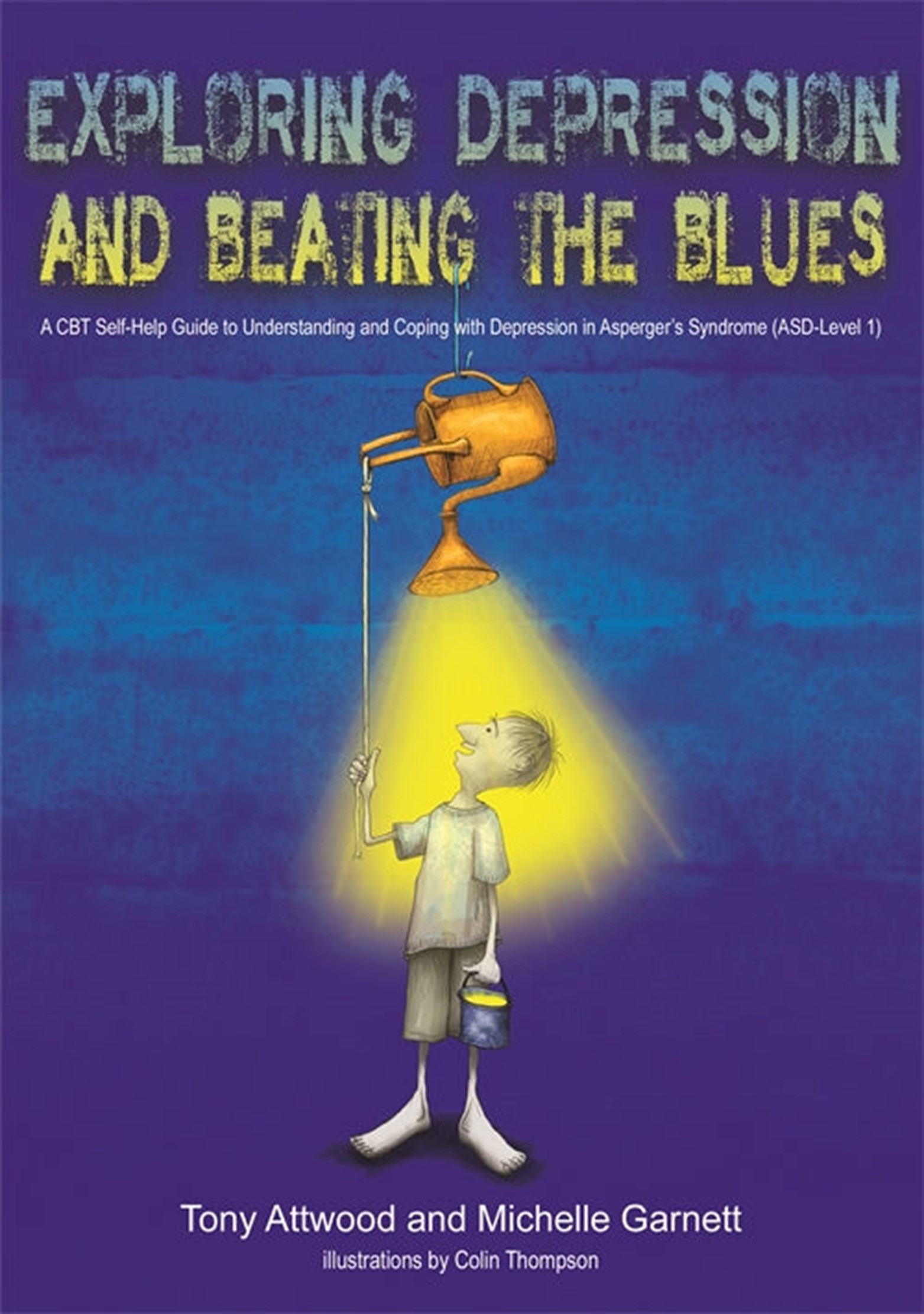Welcome to Tony Attwood's Website
A guide for parents, professionals and people with Asperger's Syndrome or Autism Spectrum Disorder Level 1 and their partners.
Ask Dr. Tony Webcasts
Regular podcasts in conversation with autismhangout.com founder/reporter Craig Evans > More Info
Participate in Research
Read about research projects that are seeking participation and find out how to get involved > More Info

to be one of the world’s foremost experts on
Autism Spectrum Disorder.
Upcoming Events
Books by Tony Attwood
Tony has published many books about Asperger's Syndrome and Autism.
He has also co-authored and contributed to publications with other experts.
He has also co-authored and contributed to publications with other experts.
New Release Out Now
Autism Working:
A Seven-Stage Plan to Thriving at Work
By Tony Attwood and Michelle Garnett


Tony Attwood, Michelle Garnett, Julia Cook, Louise Ford, and Stefanie Runham

Attwood & Garnett Events
FOUNDED BY PROFESSOR TONY ATTWOOD & DR MICHELLE GARNETT
Dr Michelle Garnett PhD is a clinical psychologist who has specialised in autism within her own private practice for over 27 years. She has co-authored six highly regarded books on autism, five with Prof Tony Attwood. Her 2018 book with Barb Cook is a seminal work on the female presentation, Spectrum Women: Walking to the Beat of Autism. Her most recent books Having Fun with Feelings on the Autism Spectrum and Ten Steps to Reducing Your Child’s Anxiety on the Autism Spectrum provide guidance to parents of young children on the autism spectrum.
Together Tony and Michelle have created a series of online courses that are available to download. There are also webinars consisting of a series of mater classes.
Recent Articles by Tony
05 November 2023
Can Autism be confused with schizophrenia?
The term autism was first used by the Swiss psychiatrist Eugen Bleuler in 1919 to describe a withdrawal from reality with a pathological predominance of inner...
05 November 2023
Autism over the age of 50
As clinicians, we have seen an increasing number of adults, and especially women, over the age of 50 seeking confirmation of autism in their developmental history and current...
16 August 2023
Autism and Ehlers-Danlos Syndrome
Researchers and clinicians in the autism area have known about the association between hypermobility and autism for a long time, and hypermobility is one common symptom...
Tony's Facebook Feed
12 hours ago
"Raising the voices of AuDHD women and girls: exploring the co-occurring conditions of autism and ADHD" by Emma Craddock: ![]()
![]() What is the article about, and why is this important?
What is the article about, and why is this important? ![]()
![]() The article discusses the unique challenges faced by women and girls who are both autistic and ADHD—"AuDHD". It discusses the historical oversight and misdiagnosis of these conditions in women due to prevailing gender biases in medical research and practice. The article also critiques the current diagnostic criteria and practices, which have been largely based on male-centric studies, and advocates for a more inclusive approach that recognises the intersectionality of gender, neurodiversity, and other identity factors.
The article discusses the unique challenges faced by women and girls who are both autistic and ADHD—"AuDHD". It discusses the historical oversight and misdiagnosis of these conditions in women due to prevailing gender biases in medical research and practice. The article also critiques the current diagnostic criteria and practices, which have been largely based on male-centric studies, and advocates for a more inclusive approach that recognises the intersectionality of gender, neurodiversity, and other identity factors. ![]()
![]() What are the main findings from the article?
What are the main findings from the article? ![]() The main findings include:
The main findings include: ![]()
![]() High Co-occurrence of Autism and ADHD: There is a significant overlap between autism and ADHD, with estimates that 30-80% of individuals with ADHD are also autistic.
High Co-occurrence of Autism and ADHD: There is a significant overlap between autism and ADHD, with estimates that 30-80% of individuals with ADHD are also autistic. ![]()
![]() Gendered Diagnosis Issues: Diagnostic criteria and practices have historically overlooked women, leading to underdiagnosis or misdiagnosis. Women and girls often exhibit internalised symptoms and are more adept at masking their difficulties, which diverges from the male-centric models used in diagnosis.
Gendered Diagnosis Issues: Diagnostic criteria and practices have historically overlooked women, leading to underdiagnosis or misdiagnosis. Women and girls often exhibit internalised symptoms and are more adept at masking their difficulties, which diverges from the male-centric models used in diagnosis. ![]()
![]() Inadequate Support Systems: There is a profound lack of pre- and post-diagnostic support tailored to the needs of neurodivergent women, compounded by long waiting lists and inadequate healthcare responses to their unique challenges.
Inadequate Support Systems: There is a profound lack of pre- and post-diagnostic support tailored to the needs of neurodivergent women, compounded by long waiting lists and inadequate healthcare responses to their unique challenges. ![]()
![]() Need for Intersectional Research: The article argues for research that is conducted by and with neurodivergent individuals, particularly emphasising the inclusion of women who have been historically left out of research narratives.
Need for Intersectional Research: The article argues for research that is conducted by and with neurodivergent individuals, particularly emphasising the inclusion of women who have been historically left out of research narratives. ![]()
![]() What next - as in implications and future approach we should take from what is in the article?
What next - as in implications and future approach we should take from what is in the article? ![]()
![]() Holistic and Intersectional Assessments:
Holistic and Intersectional Assessments: ![]() Future diagnostic criteria and support systems should consider the full spectrum of an individual's identity, including gender, race, and other socio-economic factors, to ensure a comprehensive understanding and support mechanism.
Future diagnostic criteria and support systems should consider the full spectrum of an individual's identity, including gender, race, and other socio-economic factors, to ensure a comprehensive understanding and support mechanism. ![]()
![]() Shift in Research Paradigms:
Shift in Research Paradigms: ![]() There is a call for a paradigm shift in research and healthcare practices to include qualitative studies that can capture the varied experiences of neurodivergent individuals, particularly women.
There is a call for a paradigm shift in research and healthcare practices to include qualitative studies that can capture the varied experiences of neurodivergent individuals, particularly women. ![]()
![]() Empowering Neurodivergent Voices:
Empowering Neurodivergent Voices: ![]() Encouraging and facilitating the participation of neurodivergent individuals, especially women, in research and advocacy to ensure that their needs and experiences shape the policies and practices that affect them.
Encouraging and facilitating the participation of neurodivergent individuals, especially women, in research and advocacy to ensure that their needs and experiences shape the policies and practices that affect them. ![]()
![]() Addressing Systemic Barriers:
Addressing Systemic Barriers: ![]() The article advocates for systemic changes to dismantle the barriers neurodivergent individuals face, not only in healthcare but also in education, employment, and social services.
The article advocates for systemic changes to dismantle the barriers neurodivergent individuals face, not only in healthcare but also in education, employment, and social services. ![]()
![]() These steps are crucial for fostering a society that truly supports and empowers AuDHD women and girls, recognising their unique challenges and contributions.
These steps are crucial for fostering a society that truly supports and empowers AuDHD women and girls, recognising their unique challenges and contributions. ![]()
![]() What we want to add:
What we want to add: ![]() Inclusivity Across All Gender Profiles
Inclusivity Across All Gender Profiles ![]() Recognising the underdiagnosis of autism and ADHD in women and girls has brought vital attention to this group. However, it is equally important to extend this awareness to all individuals who present with an internal presentation of autism, regardless of their gender identity. This includes non-binary and transgender individuals who may experience similar diagnostic challenges due to subtler characteristics and greater masking abilities.
Recognising the underdiagnosis of autism and ADHD in women and girls has brought vital attention to this group. However, it is equally important to extend this awareness to all individuals who present with an internal presentation of autism, regardless of their gender identity. This includes non-binary and transgender individuals who may experience similar diagnostic challenges due to subtler characteristics and greater masking abilities. ![]()
![]() Autistic individuals across all gender profiles encounter barriers shaped by societal expectations and cultural norms, which can significantly influence diagnostic accuracy. Therefore, diagnostic criteria and assessments must be refined to acknowledge and validate the internal experiences of autism without bias, ensuring sensitivity to the diverse ways autism presents itself.
Autistic individuals across all gender profiles encounter barriers shaped by societal expectations and cultural norms, which can significantly influence diagnostic accuracy. Therefore, diagnostic criteria and assessments must be refined to acknowledge and validate the internal experiences of autism without bias, ensuring sensitivity to the diverse ways autism presents itself. ![]()
![]() Healthcare providers require training to recognise these varied presentations in individuals of any gender. Similarly, support systems and therapeutic approaches need to be adaptive, addressing the unique needs of neurodivergent individuals across the gender spectrum.
Healthcare providers require training to recognise these varied presentations in individuals of any gender. Similarly, support systems and therapeutic approaches need to be adaptive, addressing the unique needs of neurodivergent individuals across the gender spectrum. ![]()
![]() Where to from here?
Where to from here? ![]() If you are interested in learning more about the combination of ADHD, executive functioning and autism, our online course Autism, ADHD and Executive Function covers the latest research on autism and ADHD, the strengths and challenges of being autistic and having ADHD, and strategies to cope at school, work, and home.
If you are interested in learning more about the combination of ADHD, executive functioning and autism, our online course Autism, ADHD and Executive Function covers the latest research on autism and ADHD, the strengths and challenges of being autistic and having ADHD, and strategies to cope at school, work, and home. ![]()
![]() attwoodandgarnettevents.com/product/webcast-event-autism-adhd-and-executive-function-10-may-2024/
attwoodandgarnettevents.com/product/webcast-event-autism-adhd-and-executive-function-10-may-2024/![]()
![]() Reference:
Reference: ![]()
![]() Craddock, E. (2024). Raising the voices of AuDHD women and girls: exploring the co-occurring conditions of autism and ADHD. Disability & Society, 1–5. doi.org/10.1080/09687599.2023.2299342
Craddock, E. (2024). Raising the voices of AuDHD women and girls: exploring the co-occurring conditions of autism and ADHD. Disability & Society, 1–5. doi.org/10.1080/09687599.2023.2299342 ![]()
![]() #actuallyautistic #autism #autistic #autismawareness #autismacceptance #autismspectrum #psychologist #psychology #alliedhealthprofessionals #teachers #psychiatry #InclusiveHealthcare #InclusiveSociety #ResearchTuesday
... See MoreSee Less
#actuallyautistic #autism #autistic #autismawareness #autismacceptance #autismspectrum #psychologist #psychology #alliedhealthprofessionals #teachers #psychiatry #InclusiveHealthcare #InclusiveSociety #ResearchTuesday
... See MoreSee Less
1 day ago
Understanding AuDHD Strengths ![]()
![]() AuDHD describes being both Autistic and having Attention-Deficit/Hyperactivity Disorder (ADHD). This combination has gained more attention in recent years. Our last blog in this series described the defining features of AuDHD and the evolution of understanding within the community. In this blog, we describe the strengths of the neurotype and address some current misconceptions.
AuDHD describes being both Autistic and having Attention-Deficit/Hyperactivity Disorder (ADHD). This combination has gained more attention in recent years. Our last blog in this series described the defining features of AuDHD and the evolution of understanding within the community. In this blog, we describe the strengths of the neurotype and address some current misconceptions. ![]()
![]() Highlighting Strengths in AuDHD
Highlighting Strengths in AuDHD ![]()
![]() AuDHD people each possess a unique set of strengths and abilities that arise from the interplay of traits associated with autism and ADHD. Acknowledging these strengths can lead to significant achievements and fulfilment. Here are some key strengths often found in AuDHD individuals:
AuDHD people each possess a unique set of strengths and abilities that arise from the interplay of traits associated with autism and ADHD. Acknowledging these strengths can lead to significant achievements and fulfilment. Here are some key strengths often found in AuDHD individuals: ![]()
![]() Innovative Problem-Solving:
Innovative Problem-Solving: ![]() AuDHDers excel at combining the rapid, expansive thought patterns of ADHD with the autism spectrum's capacity for deep, sustained attention to detail. This fusion allows for unique problem-solving abilities, where unconventional and highly effective solutions are often discovered.
AuDHDers excel at combining the rapid, expansive thought patterns of ADHD with the autism spectrum's capacity for deep, sustained attention to detail. This fusion allows for unique problem-solving abilities, where unconventional and highly effective solutions are often discovered. ![]()
![]()
![]()
![]() Creative Thinking and Divergent Thought Processes:
Creative Thinking and Divergent Thought Processes: ![]() ADHD contributes to lateral and divergent thinking, fostering creativity that, combined with the autistic capacity for intense focus on specific interests, can result in profound artistic talents and inventive outputs.
ADHD contributes to lateral and divergent thinking, fostering creativity that, combined with the autistic capacity for intense focus on specific interests, can result in profound artistic talents and inventive outputs. ![]()
![]()
![]()
![]() Hyper-Focused Engagement:
Hyper-Focused Engagement: ![]() When interested in a particular subject or activity, AuDHDers can exhibit remarkable levels of focus and dedication. This hyper-focus can lead to extensive knowledge and skills in specific areas, often surpassing their neurotypical peers.
When interested in a particular subject or activity, AuDHDers can exhibit remarkable levels of focus and dedication. This hyper-focus can lead to extensive knowledge and skills in specific areas, often surpassing their neurotypical peers. ![]()
![]()
![]()
![]() Tenacity and Adaptability:
Tenacity and Adaptability: ![]() Living as an AuDHD equips the person with a unique set of coping mechanisms, fostering resilience. The sheer determination and tenacity of autism combined with the ADHD capacity to embrace change and new ideas allows the person to develop and repeatedly use strategies for dealing with the diverse challenges they encounter. Neuroplasticity relies on repeated practice of a skill over time. Repetition is a characteristic of autism, and repeated practice is very much needed to increase skill and resilience.
Living as an AuDHD equips the person with a unique set of coping mechanisms, fostering resilience. The sheer determination and tenacity of autism combined with the ADHD capacity to embrace change and new ideas allows the person to develop and repeatedly use strategies for dealing with the diverse challenges they encounter. Neuroplasticity relies on repeated practice of a skill over time. Repetition is a characteristic of autism, and repeated practice is very much needed to increase skill and resilience. ![]()
![]()
![]()
![]() Passion and Intensity:
Passion and Intensity: ![]() The intense passions often associated with autism can combine with the energetic drive of ADHD, leading to powerful motivation and enthusiasm for pursued interests. This passion can drive significant achievements and deep expertise in chosen fields.
The intense passions often associated with autism can combine with the energetic drive of ADHD, leading to powerful motivation and enthusiasm for pursued interests. This passion can drive significant achievements and deep expertise in chosen fields. ![]()
![]()
![]()
![]() Heightened Perception and Sensory Awareness:
Heightened Perception and Sensory Awareness: ![]() Many AuDHDers experience the world with heightened sensory sensitivity, which can lead to a detailed and detailed perception. This trait often leads to advanced skills in areas requiring a high level of sensory discrimination, like music, visual arts, or scientific research.
Many AuDHDers experience the world with heightened sensory sensitivity, which can lead to a detailed and detailed perception. This trait often leads to advanced skills in areas requiring a high level of sensory discrimination, like music, visual arts, or scientific research. ![]()
![]()
![]()
![]() Misconceptions about being autistic and having ADHD
Misconceptions about being autistic and having ADHD ![]() 'I like my routines and often forget my wallet or phone; maybe I have AuDHD?’
'I like my routines and often forget my wallet or phone; maybe I have AuDHD?’ ![]() This oversimplification ignores the complex nature of AuDHD. While many people might prefer routines and occasionally forget things, AuDHD involves consistent patterns of attentional and executive functioning challenges, compounded by the unique sensory processing and social communication aspects of autism. The interplay between ADHD and autism in AuDHD creates a distinctive neurodivergent profile that affects individuals in more pervasive and profound ways than the mere preference for routine and occasional forgetfulness.
This oversimplification ignores the complex nature of AuDHD. While many people might prefer routines and occasionally forget things, AuDHD involves consistent patterns of attentional and executive functioning challenges, compounded by the unique sensory processing and social communication aspects of autism. The interplay between ADHD and autism in AuDHD creates a distinctive neurodivergent profile that affects individuals in more pervasive and profound ways than the mere preference for routine and occasional forgetfulness. ![]()
![]()
![]()
![]() AuDHD isn’t a “real” condition.
AuDHD isn’t a “real” condition. ![]() This myth dismisses the lived experiences of many AuDHD individuals. AuDHD represents a unique neurodivergent profile where the characteristics of autism and ADHD intersect, reflecting the natural diversity of human brains. Current research and clinical practice recognise and validate this neurodiversity (APA, 2022; Rong et al., 2021).
This myth dismisses the lived experiences of many AuDHD individuals. AuDHD represents a unique neurodivergent profile where the characteristics of autism and ADHD intersect, reflecting the natural diversity of human brains. Current research and clinical practice recognise and validate this neurodiversity (APA, 2022; Rong et al., 2021). ![]()
![]()
![]() AuDHDers just need to try harder and lack willpower.
AuDHDers just need to try harder and lack willpower. ![]() This misconception stems from the belief that AuDHD is a problem of motivation or effort. AuDHDers often try as hard as they can to pay attention. Their struggle with attention has nothing to do with attitude. However, it is due to differences in brain function and neurological differences, not a lack of desire or effort.
This misconception stems from the belief that AuDHD is a problem of motivation or effort. AuDHDers often try as hard as they can to pay attention. Their struggle with attention has nothing to do with attitude. However, it is due to differences in brain function and neurological differences, not a lack of desire or effort. ![]()
![]()
![]()
![]() You can’t focus if you’re an AuDHDer.
You can’t focus if you’re an AuDHDer. ![]() AuDHD individuals often experience fluctuating focus abilities influenced by their current situation, capacity, sensory sensitivities, and the environmental demands they face. These factors can significantly impact their ability to concentrate on tasks. Far from being careless, they can exhibit profound hyperfocus on subjects or activities they find meaningful or stimulating when conditions align with their needs.
AuDHD individuals often experience fluctuating focus abilities influenced by their current situation, capacity, sensory sensitivities, and the environmental demands they face. These factors can significantly impact their ability to concentrate on tasks. Far from being careless, they can exhibit profound hyperfocus on subjects or activities they find meaningful or stimulating when conditions align with their needs. ![]()
![]()
![]() To be AuDHD, you need to be hyperactive.
To be AuDHD, you need to be hyperactive. ![]() Not all AuDHDers have hyperactivity as a symptom of their ADHD traits. The presence or absence of hyperactivity does not define the condition, and it is important to recognise the diversity of experiences in AuDHD.
Not all AuDHDers have hyperactivity as a symptom of their ADHD traits. The presence or absence of hyperactivity does not define the condition, and it is important to recognise the diversity of experiences in AuDHD. ![]()
![]()
![]() Only boys have AuDHD.
Only boys have AuDHD. ![]() It’s a common misconception that only boys can be AuDHD. While boys are more likely to be diagnosed autistic or ADHD, it doesn’t mean that girls or women can’t or non-binary people with an internal presentation. They are often underdiagnosed due to the different ways characteristics can present. For instance, girls and those with an internal presentation of autism with ADHD may not exhibit the stereotypical hyperactivity often associated with the condition (Quinn and Madhoo (2014; Novik et al., 2006; Young et al., 2020). Instead, they might:
It’s a common misconception that only boys can be AuDHD. While boys are more likely to be diagnosed autistic or ADHD, it doesn’t mean that girls or women can’t or non-binary people with an internal presentation. They are often underdiagnosed due to the different ways characteristics can present. For instance, girls and those with an internal presentation of autism with ADHD may not exhibit the stereotypical hyperactivity often associated with the condition (Quinn and Madhoo (2014; Novik et al., 2006; Young et al., 2020). Instead, they might: ![]() 1. Frequent daydreaming,
1. Frequent daydreaming, ![]() 2. More difficulties in forming and maintaining peer relationships,
2. More difficulties in forming and maintaining peer relationships, ![]() 3. Struggle with organisation,
3. Struggle with organisation, ![]() 4. Easily overwhelmed,
4. Easily overwhelmed, ![]() 5. Inattentiveness is generally more common and pronounced,
5. Inattentiveness is generally more common and pronounced, ![]() 6. Have issues with “internalising disorders” such as anxiety,
6. Have issues with “internalising disorders” such as anxiety, ![]() 7. Increased Incidence of Low Self-Esteem.
7. Increased Incidence of Low Self-Esteem. ![]()
![]()
![]() Similarly, the criteria for diagnosing autism were initially based on the presentation in boys. As a result, girls and women who are autistic often defy these stereotypical presentations. They may “mask” their autistic traits, adapting their behaviour to fit societal expectations, which can lead to their autism being overlooked (Green et al., 2019).
Similarly, the criteria for diagnosing autism were initially based on the presentation in boys. As a result, girls and women who are autistic often defy these stereotypical presentations. They may “mask” their autistic traits, adapting their behaviour to fit societal expectations, which can lead to their autism being overlooked (Green et al., 2019). ![]()
![]() Medication is the only treatment for AuDHD: While medication can be a part of a comprehensive therapy plan, it’s not the only approach. A holistic approach that includes strategies, lifestyle modifications, and environmental accommodations can be equally, if not more, beneficial. This could involve tailored educational plans, occupational therapy, mindfulness practices, regular physical activity, and a supportive home, school, or work environment. It’s about creating an environment where AuDHD can thrive by leveraging their unique strengths and abilities.
Medication is the only treatment for AuDHD: While medication can be a part of a comprehensive therapy plan, it’s not the only approach. A holistic approach that includes strategies, lifestyle modifications, and environmental accommodations can be equally, if not more, beneficial. This could involve tailored educational plans, occupational therapy, mindfulness practices, regular physical activity, and a supportive home, school, or work environment. It’s about creating an environment where AuDHD can thrive by leveraging their unique strengths and abilities. ![]()
![]() Where to from here?
Where to from here? ![]()
![]() If you are interested in learning more about the combination of ADHD, executive functioning and autism, our online course Autism, ADHD and Executive Function covers the latest research on autism and ADHD, the strengths and challenges of being autistic and having ADHD, and strategies to cope at school, work, and home.
If you are interested in learning more about the combination of ADHD, executive functioning and autism, our online course Autism, ADHD and Executive Function covers the latest research on autism and ADHD, the strengths and challenges of being autistic and having ADHD, and strategies to cope at school, work, and home. ![]()
![]() attwoodandgarnettevents.com/product/webcast-event-autism-adhd-and-executive-function-10-may-2024/
attwoodandgarnettevents.com/product/webcast-event-autism-adhd-and-executive-function-10-may-2024/![]()
![]()
![]() References
References ![]()
![]() American Psychiatric Association. (2022). Diagnostic and statistical manual of mental disorders (5th ed., text rev.). doi.org/10.1176/appi.books.9780890425787
American Psychiatric Association. (2022). Diagnostic and statistical manual of mental disorders (5th ed., text rev.). doi.org/10.1176/appi.books.9780890425787 ![]()
![]() Green RM, Travers AM, Howe Y, McDougle CJ. Women and Autism Spectrum Disorder: Diagnosis and Implications for Treatment of Adolescents and Adults. Curr Psychiatry Rep. 2019 Mar 9;21(4):22. doi: 10.1007/s11920-019-1006-3. PMID: 30852705.
Green RM, Travers AM, Howe Y, McDougle CJ. Women and Autism Spectrum Disorder: Diagnosis and Implications for Treatment of Adolescents and Adults. Curr Psychiatry Rep. 2019 Mar 9;21(4):22. doi: 10.1007/s11920-019-1006-3. PMID: 30852705. ![]()
![]() Novik TS, Hervas A, Ralston SJ, et al. Influence of gender on attention-deficit/hyperactivity disorder in Europe-ADORE. Eur Child Adolesc Psychiatry. 2006;(suppl 1):115-124.
Novik TS, Hervas A, Ralston SJ, et al. Influence of gender on attention-deficit/hyperactivity disorder in Europe-ADORE. Eur Child Adolesc Psychiatry. 2006;(suppl 1):115-124. ![]()
![]() Rong, Y., Chang-Yiang, Y., Yang, Y., Jin, Y., & Wang Y. (2021). Prevalence of attention-deficit/hyperactivity disorder in individuals with autism spectrum disorder: A meta-analysis. Research in Autism Spectrum Disorders, 83. doi.org/10.1016/j.rasd.2021.101759
Rong, Y., Chang-Yiang, Y., Yang, Y., Jin, Y., & Wang Y. (2021). Prevalence of attention-deficit/hyperactivity disorder in individuals with autism spectrum disorder: A meta-analysis. Research in Autism Spectrum Disorders, 83. doi.org/10.1016/j.rasd.2021.101759 ![]()
![]() Young S, Adamo N, Ásgeirsdóttir BB, Branney P, Beckett M, Colley W, Cubbin S, Deeley Q, Farrag E, Gudjonsson G, Hill P, Hollingdale J, Kilic O, Lloyd T, Mason P, Paliokosta E, Perecherla S, Sedgwick J, Skirrow C, Tierney K, van Rensburg K, Woodhouse E. Females with ADHD: An expert consensus statement taking a lifespan approach providing guidance for the identification and treatment of attention-deficit/ hyperactivity disorder in girls and women. BMC Psychiatry. 2020 Aug 12;20(1):404. doi: 10.1186/s12888-020-02707-9. PMID: 32787804; PMCID: PMC7422602.
Young S, Adamo N, Ásgeirsdóttir BB, Branney P, Beckett M, Colley W, Cubbin S, Deeley Q, Farrag E, Gudjonsson G, Hill P, Hollingdale J, Kilic O, Lloyd T, Mason P, Paliokosta E, Perecherla S, Sedgwick J, Skirrow C, Tierney K, van Rensburg K, Woodhouse E. Females with ADHD: An expert consensus statement taking a lifespan approach providing guidance for the identification and treatment of attention-deficit/ hyperactivity disorder in girls and women. BMC Psychiatry. 2020 Aug 12;20(1):404. doi: 10.1186/s12888-020-02707-9. PMID: 32787804; PMCID: PMC7422602. ![]()
![]() #actuallyautistic #autism #autistic #autismawareness #autismacceptance #autismspectrum #psychologist #psychology #alliedhealthprofessionals #teachers #psychiatry #InclusiveHealthcare #InclusiveSociety #BlogWednesday
... See MoreSee Less
#actuallyautistic #autism #autistic #autismawareness #autismacceptance #autismspectrum #psychologist #psychology #alliedhealthprofessionals #teachers #psychiatry #InclusiveHealthcare #InclusiveSociety #BlogWednesday
... See MoreSee Less
2 days ago
“I get so frustrated when others are late, as I highly value punctuality, but the truth is, I struggle with managing my own time too, often losing track of it completely. It makes me feel guilty, knowing I'm upset with others for something I constantly deal with myself, it’s a daily battle.” - Adult AuDHDer. ![]()
![]()
![]()
![]() This quote from an AuDHDer captures the emotional struggle with time management, often referred to as time blindness. Although she highly values punctuality, her inherent time blindness makes it challenging to accurately gauge time passage.
This quote from an AuDHDer captures the emotional struggle with time management, often referred to as time blindness. Although she highly values punctuality, her inherent time blindness makes it challenging to accurately gauge time passage. ![]()
![]() This often results in being late or underestimating how long tasks will take (e.g., thinking it will only take 30 minutes and two hours later!!). Consequently, every scheduled event can become a struggle, as the AuDHDer must constantly work to align their internal sense of time with external commitments. This ongoing effort frequently leads to feelings of frustration and stress, compounded by feelings of guilt for experiencing frustration over delays caused by others when they themselves face similar challenges.
This often results in being late or underestimating how long tasks will take (e.g., thinking it will only take 30 minutes and two hours later!!). Consequently, every scheduled event can become a struggle, as the AuDHDer must constantly work to align their internal sense of time with external commitments. This ongoing effort frequently leads to feelings of frustration and stress, compounded by feelings of guilt for experiencing frustration over delays caused by others when they themselves face similar challenges. ![]()
![]() Where to from here?
Where to from here?![]() If you are interested in learning more about the combination of ADHD, executive functioning and autism, our online course Autism, ADHD and Executive Function covers the latest research on autism and ADHD, the strengths and challenges of being autistic and having ADHD, and strategies to cope at school, work, and home.
If you are interested in learning more about the combination of ADHD, executive functioning and autism, our online course Autism, ADHD and Executive Function covers the latest research on autism and ADHD, the strengths and challenges of being autistic and having ADHD, and strategies to cope at school, work, and home.![]()
![]() attwoodandgarnettevents.com/product/webcast-event-autism-adhd-and-executive-function-10-may-2024/
attwoodandgarnettevents.com/product/webcast-event-autism-adhd-and-executive-function-10-may-2024/![]()
![]() #actuallyautistic #autism #autistic #autismawareness #autismacceptance #autismspectrum #psychologist #psychology #alliedhealthprofessionals #teachers #psychiatry #InclusiveHealthcare #InclusiveSociety #QuoteMonday
... See MoreSee Less
#actuallyautistic #autism #autistic #autismawareness #autismacceptance #autismspectrum #psychologist #psychology #alliedhealthprofessionals #teachers #psychiatry #InclusiveHealthcare #InclusiveSociety #QuoteMonday
... See MoreSee Less
